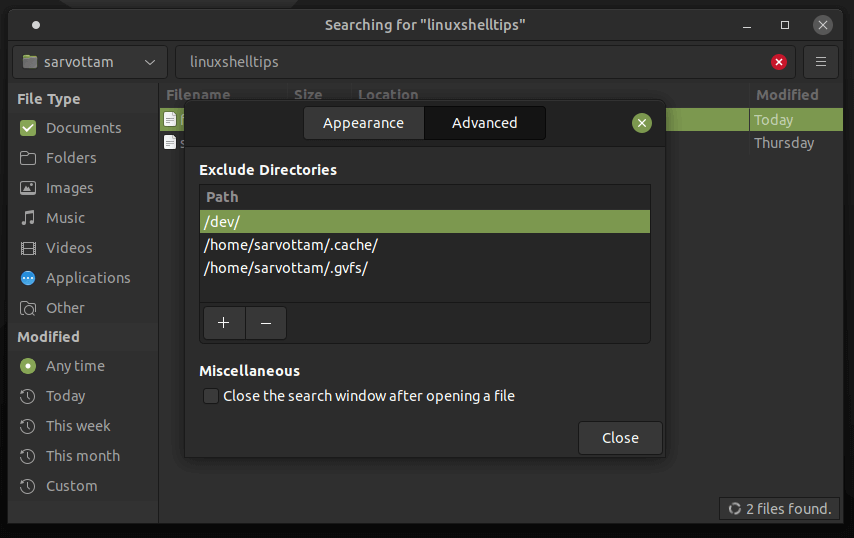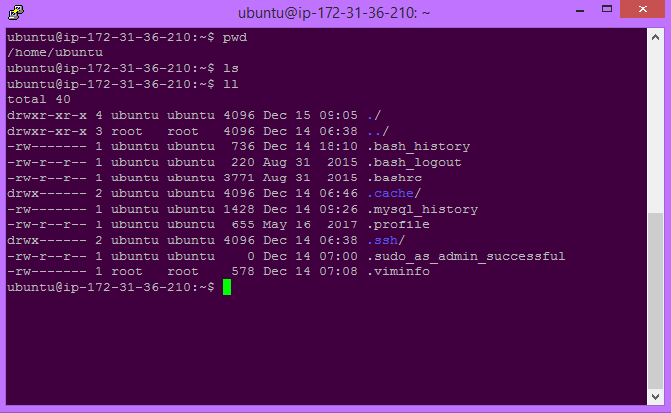
The screenshot below is the output for using the above command string.

The command string to use is as follows: $ find. Also, each element of the resulting output from this command will be linked with a timestamp that points to the last modification attempt on the associated file, directory, or subdirectory. We will key in a command string on our terminal that will enable us to list active files and their associated subdirectories. To kick off this experiment, we need some relatable sample output from our terminal. It is one place you will never miss downloaded files and other sub-directories. Another directory to use for this article experiment is the “Downloads” directory. It is a popular directory with many files and sub-directories. The following command should get you to this “Documents” directory. To be safe and not play around with your vulnerable system files, you could use your “Documents” directory that is usually predefined in the Linux operating system. You first need to launch your terminal and navigate a system path that you know has many files and folder directories. We will pipe some simple commands to help us understand the objectified implication of this article piece. As an advantage, you will know whether the modification was associated with malicious content through the generated system logs. In short, when dealing with files and directories under a Linux operating system environment, we can build an events timeline to identify vulnerable file modifications through timestamps attached to each modification. You will know what happened to the files and folders in your Linux OS and identify these actions based on when they happened. Linux has useful commands to help us achieve such results. If a Linux landlord or caretaker manages this room you entered, it will know exactly what you did and which items you touched or interchanged. It is like walking into a room to touch and interchange items. Every action linked with the user files and folders/directories under a Linux environment leaves a user footprint or fingerprint. There is more to using the Linux OS file system than just creating, editing, modifying, and deleting the user file systems and folders. Working with files and directories on LinuxĪ perfect case scenario is your daily interaction with files and folders under the Linux operating system environment. You will always want to know what is hidden here and what more you can do under its umbrella.

As you continue to build your user experience under a Linux OS environment, your OS curiosity will grow daily. You can never have more power than the operating system, like with the case of Linux. The operating systems here are more of your assistant. This case is not viable in other operating system distributions as there are too many abstractions in place. Under Linux, the operating system is your loyal servant and you the master. Re-enforce the key concepts presented in the course.Once you shed off the beginner’s coat, you can get out of these default rules and create your own. Knowledge about shell scripting and the UNIX shell in general.īoth courses include access to an Internet Lab system forĬompleting the course's hands-on exercises, which are used to Shell Scripting is a good option if you are alreadyĬomfortable with UNIX or Linux and just need to sharpen your System environments or need a refresher on key concepts. Should be taken if you are new to the UNIX and Linux operating

Very good "Introduction to UNIX Shell Scripting" module, and You are ready to move past the basics, either of these onlineĪnd Linux Operating System Fundamentals contains a
#UNIX FIND FILES BY DATE HOW TO#
The possibilities are practically limitless.ĭo you need to learn UNIX or Linux, including how to read and write shell scripts? If

It also proves useful for backing up large groups of files or updating their permissions. The UNIX command to find a file comes in handy when you need to search for a misplaced document. You may also use the "-exec" option in conjunction with tar, compress, chmod, cpio and other functions. (blank output since no old files were found) It displays a list of files that # find /myfiles -exec ls -l # find /myfiles -atime +30 When it performs a search, UNIX checks each item to determine if it fits your criteria. It uses the current folder if you do not supply a path on the command line. Here is the basic syntax for the UNIX command to find a file:įind įind looks for files in the specified directory and all of its subdirectories. This versatile utility also has the capability to delete or make changes to each item that it locates. It returns lists of items that meet your specific search criteria. 12 UNIX Find Command Examples of How to Locate Files and DirectoriesĪs its name suggests, the UNIX "find" command is used to locate files, directories and links.


 0 kommentar(er)
0 kommentar(er)
